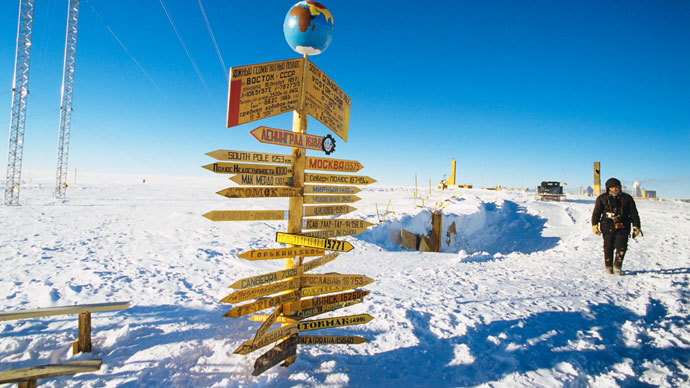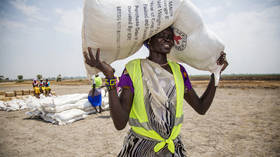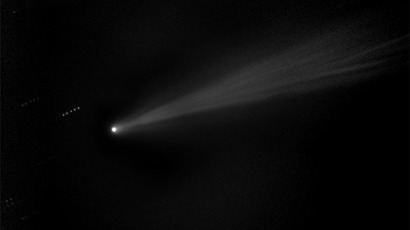Sun-blown ISON comet remains harvested in Antarctic

Scientist at the Vostok Antarctic station are to gather dust from the comet ISON, which was disintegrated by the sun in late November 2013. They hope their luck will help them find the “basic building blocks” of life.
The Russian scientists manning the station will take three attempts to harvest space dust. The first will be between Tuesday and Wednesday this week, then again between Friday and Saturday, and also sometime in late January, Sergey Bulat from St. Petersburg Institute of Nuclear Physics, told RIA Novosti.
Bulat and his colleagues initially scheduled their dust hunt for December, when the comet was expected to pass Earth on its way back into outer space after grazing the sun. But its destruction called for a change of plan.
“We expected the comet to survive and hoped to gather some large particulates in December. Now if we get something, it would be particulates from the coma [the major part of the head of a comet] and tail left when it was approaching the sun,” he explained.
Dust gathering is done in the Antarctic because the air over the polar continent is cleaner compared to more inhabited locations. The scientists will use five 150-square meter polyethylene canvases as traps.
Each trap will be unrolled nor far from the station and left in the hope that some comet particulates would fall on it. Then they will be preserved in chemically inert argon gas and shipped to St. Petersburg for microscopic study, which will start in May.
“We are most interested in particulates several micrometers in size, which didn’t burn in the atmosphere and descended slowly. The fact that they did not experience heating is what makes them valuable,” Bulat said.

Researchers at the Eukaryotic Genetics Lab, where Bulat works, hope they will discover basic “building blocks” of life among the comet remains. Such a find would provide evidence in favor of the panspermia hypothesis, which says that life can cross space with comets and meteorites and that it could have been seeded on Earth rather than beginning here.
But finding any comet particulates, yet along the coveted evidence of life seed, would be like winning a lottery, warns astronomer Stanislav Korotky, who helped the polar explorers prepare the experiment.
“The comet passed that space two or three months ago. Dust from it must have detached a long time ago to still be there,” he said.
With no air friction in space vacuum, a comet’s tail does not just hand at the spot it was blown from the comet. So if the Antarctic dust hunters are lucky enough to find some, it would have separated from ISON tens of thousands years ago.
Adding to that is the fact that Earth’s path is far from overlapping exactly with that of the comet. Rather it passes some 3 million km - eight times the distance from Earth to the moon - from where the comet was in early November.
ISON was discovered in September 2012 by two astronomers from Russia and Belarus. If it did survive its approach to the sun, it would be clearly seen in the night sky from Earth, making a spectacular sight. But tidal forces and head from the sun disintegrated it.
Studying comic dust has long been a significant part of space exploration. One of the more publicized missions targeting comets in particular was NASA’s Stardust robotic mission, which gathered samples from the coma of comet Wild 2 and returned it to Earth. The aerogel traps with space dust are still being processed with the help of Stardust@home project volunteers.














